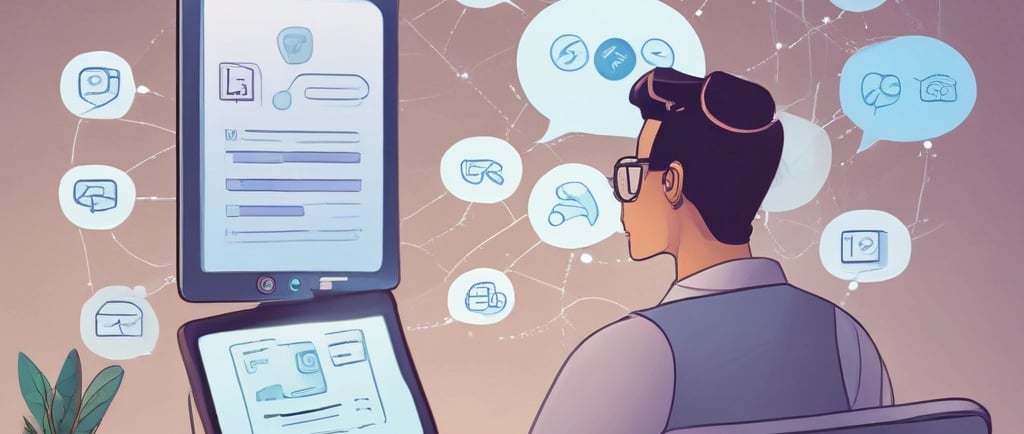How AI Chatbots Are Transforming Customer Service
Customer expectations are higher than ever. People want fast, efficient, and personalized support—without long wait times or frustrating automated phone menus. That’s where AI chatbots come in. AI chatbots are changing the game in customer service, helping businesses provide instant, 24/7 support while reducing the workload on human teams. Whether answering FAQs, handling bookings, or troubleshooting issues, chatbots make customer interactions smoother and more efficient. In this post, we’ll explore how AI chatbots are transforming customer service and why small businesses should consider adopting them.
2/2/20252 min read


How AI Chatbots Are Transforming Customer Service
What Are AI Chatbots?
AI chatbots are software applications that use artificial intelligence to simulate human-like conversations. They can be programmed with specific responses or use machine learning to understand and respond to customer queries more naturally.
Some common chatbot types include:
✅ Rule-Based Chatbots – Follow predefined scripts and are ideal for handling FAQs.
✅ AI-Powered Chatbots – Use Natural Language Processing (NLP) to understand context and provide smarter, more flexible responses.
✅ Hybrid Chatbots – Combine both approaches, using AI but allowing human agents to step in when needed.
How Chatbots Are Improving Customer Service
1. 24/7 Availability: Unlike human employees, chatbots don’t take breaks. They’re available 24/7, ensuring that customers get instant responses, even outside of business hours.
2. Faster Response Times: Customers hate waiting. AI chatbots can respond to multiple queries simultaneously, eliminating long wait times and keeping customers happy.
3. Reducing Workload for Human Teams: Repetitive questions like “What are your opening hours?” or “Where’s my order?” can overwhelm customer service teams. Chatbots handle these routine queries, freeing up human agents for more complex issues.
4. Personalized Customer Interactions: AI chatbots can store customer data and past interactions, allowing them to provide personalized responses and recommendations.
5. Cost Savings: Hiring and training customer service representatives can be expensive. Chatbots reduce costs by automating routine interactions while maintaining high service quality.
Real-World Examples of AI Chatbots in Action
📌 E-Commerce – Chatbots help customers track orders, suggest products, and handle returns.
📌 Healthcare – AI bots assist with appointment scheduling and answering health-related FAQs.
📌 Hospitality – Hotels use chatbots for booking inquiries, room service requests, and local recommendations.
📌 Finance – Banks use chatbots for account balance inquiries, fraud detection, and customer support.
How Small Businesses Can Get Started with AI Chatbots
Thinking about implementing a chatbot for your business? Here’s how to get started:
1️⃣ Identify Your Needs – Determine what tasks you want your chatbot to handle (e.g., FAQs, bookings, customer support).
2️⃣ Choose the Right Platform – There are many chatbot platforms available, such as ChatGPT, ManyChat, and Voiceflow.
3️⃣ Train Your Chatbot – Teach it common customer queries and improve responses over time using AI learning.
4️⃣ Integrate with Your Business Tools – Connect your chatbot to your website, social media, and messaging apps for seamless communication.
5️⃣ Monitor & Improve – Track chatbot performance and refine responses based on customer feedback.
Conclusion
AI chatbots are no longer just a futuristic idea—they’re a powerful tool that businesses can use today to enhance customer service, reduce costs, and improve efficiency. Whether you’re a small business looking to automate simple inquiries or a larger company aiming to personalize customer interactions, chatbots can make a huge impact.
Want to explore how an AI chatbot could work for your business? Let’s chat! 🚀